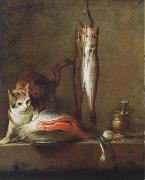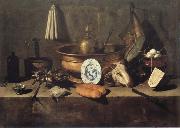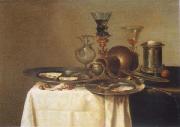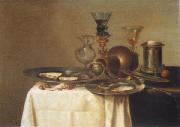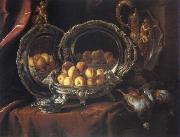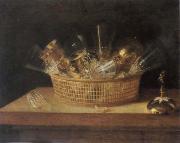Wholesale Oil Painting No Minimum |
|||||||||||
|
|
|||||||||||

|
|||||||||||
|
|
|
||||||||
Jean Baptiste Simeon Chardin1699-1779 French Jean Baptiste Simeon Chardin Locations Chardin was born in Paris, the son of a cabinetmaker, and rarely left the city. He lived on the Left Bank near Saint-Sulpice until 1757, when Louis XV granted him a studio and living quarters in the Louvre. Chardin entered into a marriage contract with Marguerite Saintard in 1723, whom he did not marry until 1731. He served apprenticeships with the history painters Pierre-Jacques Cazes and Noël-Nicholas Coypel, and in 1724 became a master in the Acad??mie de Saint-Luc. Upon presentation of The Ray in 1728, he was admitted to the Acad??mie Royale de Peinture et de Sculpture. The following year he ceded his position in the Acad??mie de Saint-Luc. In November of 1731 his son Jean-Pierre was baptized, and a daughter, Marguerite-Agn??s, was baptized in 1733. In 1735 his wife Marguerite died, and within two years Marguerite-Agn??s had died as well. The Ray, 1728, Mus??e du Louvre, Paris.Beginning in 1737 Chardin exhibited regularly at the Salon. He would prove to be a dedicated academician, regularly attending meetings for fifty years, and functioning successively as counsellor, treasurer, and secretary, overseeing in 1761 the installation of Salon exhibitions. In 1744 he entered his second marriage, this time to Françoise-Marguerite Pouget. The following year a daughter, Ang??lique-Françoise, was born, but she died in 1746. In 1752 Chardin was granted a pension of 500 livres by Louis XV. At the Salon of 1759 he exhibited nine paintings; it was the first Salon to be commented upon by Denis Diderot, who would prove to be a great admirer and public champion of Chardin work. Beginning in 1761, his responsibilities on behalf of the Salon, simultaneously arranging the exhibitions and acting as treasurer, resulted in a diminution of productivity in painting, and the showing of replicas of previous works. In 1763 his services to the Acad??mie were acknowledged with an extra 200 livres in pension. In 1765 he was unanimously elected associate member of the Acad??mie des Sciences, Belles-Lettres et Arts of Rouen, but there is no evidence that he left Paris to accept the honor.[8] By 1770 Chardin was the Premiere peintre du roi, and his pension of 1,400 livres was the highest in the Academy. In 1772 Chardin son, also a painter, drowned in Venice, a probable suicide. The artist last known oil painting was dated 1776; his final Salon participation was in 1779, and featured several pastel studies. Gravely ill by November of that year, he died in Paris on December 6, at the age of 80. |
||||||||
|
|
||||||||
Style life
Style life Painting ID:: 45540 |
mk186
1728 Madrids, Museo Thyssen-Bornemisza mk186 1728 Madrids, Museo Thyssen-Bornemisza |
|||||||
|
|
||||||||
Giovanni Battista ReccoItalian, 1615-1660 |
||||||||
|
|
||||||||
|
|
Style life
Style life Painting ID:: 45558 |
mk186
around 1650 Napleses, Museo di Capodimonte mk186 around 1650 Napleses, Museo di Capodimonte |
||||||
|
|
||||||||
Willem Claesz Heda1594-1682 Dutch Willem Claesz Heda Galleries Dutch painter. He was a still-life painter, who, like Pieter Claesz., is noted for his monochrome breakfast-pieces, which are, however, more opulent than those of Claesz. Heda earliest dated work is a Vanitas (1621; The Hague, Mus. Bredius), which shows a still-life from a high viewpoint, composed of various objects bearing vanitas associations (e.g. a bowl of glowing embers, smoker requisites, an overturned glass and a skull); the colouring is in brownish-grey tones and represents one of the earliest examples of a Dutch monochrome still-life (monochrome refers to the range of tones, rather than of colours). Even in this early work Heda skill at painting textures is evident. A more balanced composition is achieved in another Still-life (1629; The Hague, Mauritshuis) and in the Breakfast Table (1631; Dresden, Gemeldegal. Alte Meister), in both of which the objects, set against a neutral background, are linked by a strong diagonal. The Mauritshuis still-life also gives an early indication of Heda interest in painting the effects of light. In 1631 he became a member of the Haarlem Guild of St Luke (of which he served as deacon on several occasions after 1637). |
||||||||
|
|
||||||||
|
|
Style life
Style life Painting ID:: 45637 |
mk186
1637 Antwerp museum Mayer van the Bergh mk186 1637 Antwerp museum Mayer van the Bergh |
||||||
|
|
||||||||
Willem Claesz Heda1594-1682 Dutch Willem Claesz Heda Galleries Dutch painter. He was a still-life painter, who, like Pieter Claesz., is noted for his monochrome breakfast-pieces, which are, however, more opulent than those of Claesz. Heda earliest dated work is a Vanitas (1621; The Hague, Mus. Bredius), which shows a still-life from a high viewpoint, composed of various objects bearing vanitas associations (e.g. a bowl of glowing embers, smoker requisites, an overturned glass and a skull); the colouring is in brownish-grey tones and represents one of the earliest examples of a Dutch monochrome still-life (monochrome refers to the range of tones, rather than of colours). Even in this early work Heda skill at painting textures is evident. A more balanced composition is achieved in another Still-life (1629; The Hague, Mauritshuis) and in the Breakfast Table (1631; Dresden, Gemeldegal. Alte Meister), in both of which the objects, set against a neutral background, are linked by a strong diagonal. The Mauritshuis still-life also gives an early indication of Heda interest in painting the effects of light. In 1631 he became a member of the Haarlem Guild of St Luke (of which he served as deacon on several occasions after 1637). |
||||||||
|
|
||||||||
|
|
Style life
Style life Painting ID:: 45639 |
mk186
1637 Antwerp museum Mayer van the Bergh mk186 1637 Antwerp museum Mayer van the Bergh |
||||||
|
|
||||||||
Jean Baptiste Simeon Chardin1699-1779 French Jean Baptiste Simeon Chardin Locations Chardin was born in Paris, the son of a cabinetmaker, and rarely left the city. He lived on the Left Bank near Saint-Sulpice until 1757, when Louis XV granted him a studio and living quarters in the Louvre. Chardin entered into a marriage contract with Marguerite Saintard in 1723, whom he did not marry until 1731. He served apprenticeships with the history painters Pierre-Jacques Cazes and Noël-Nicholas Coypel, and in 1724 became a master in the Acad??mie de Saint-Luc. Upon presentation of The Ray in 1728, he was admitted to the Acad??mie Royale de Peinture et de Sculpture. The following year he ceded his position in the Acad??mie de Saint-Luc. In November of 1731 his son Jean-Pierre was baptized, and a daughter, Marguerite-Agn??s, was baptized in 1733. In 1735 his wife Marguerite died, and within two years Marguerite-Agn??s had died as well. The Ray, 1728, Mus??e du Louvre, Paris.Beginning in 1737 Chardin exhibited regularly at the Salon. He would prove to be a dedicated academician, regularly attending meetings for fifty years, and functioning successively as counsellor, treasurer, and secretary, overseeing in 1761 the installation of Salon exhibitions. In 1744 he entered his second marriage, this time to Françoise-Marguerite Pouget. The following year a daughter, Ang??lique-Françoise, was born, but she died in 1746. In 1752 Chardin was granted a pension of 500 livres by Louis XV. At the Salon of 1759 he exhibited nine paintings; it was the first Salon to be commented upon by Denis Diderot, who would prove to be a great admirer and public champion of Chardin work. Beginning in 1761, his responsibilities on behalf of the Salon, simultaneously arranging the exhibitions and acting as treasurer, resulted in a diminution of productivity in painting, and the showing of replicas of previous works. In 1763 his services to the Acad??mie were acknowledged with an extra 200 livres in pension. In 1765 he was unanimously elected associate member of the Acad??mie des Sciences, Belles-Lettres et Arts of Rouen, but there is no evidence that he left Paris to accept the honor.[8] By 1770 Chardin was the Premiere peintre du roi, and his pension of 1,400 livres was the highest in the Academy. In 1772 Chardin son, also a painter, drowned in Venice, a probable suicide. The artist last known oil painting was dated 1776; his final Salon participation was in 1779, and featured several pastel studies. Gravely ill by November of that year, he died in Paris on December 6, at the age of 80. |
||||||||
|
|
||||||||
|
|
Style life
Style life Painting ID:: 45641 |
mk186
1766 Carcassonne, muse of the Beaux-type mk186 1766 Carcassonne, muse of the Beaux-type |
||||||
|
|
||||||||
Francois Desportes1661-1743 Francois Desportes Locations French painter. He is best known for his hunting scenes and paintings of animals. Desportes, who began as a portrait painter, was among the first to paint landscapes from nature; for that practice he was held to be eccentric. His works are in the tradition of careful realism of Flemish still-life paintings. The Louvre and the Wallace Collection, London, have examples of his work. |
||||||||
|
|
||||||||
|
|
Style life
Style life Painting ID:: 45679 |
mk186
1739-42 Stockholm nationally museum mk186 1739-42 Stockholm nationally museum |
||||||
|
|
||||||||
Sebastian Stosskopff1597-1657 |
||||||||
|
|
||||||||
|
|
Style life
Style life Painting ID:: 45694 |
mk186
1644
Strabburg, muse of the Beaux-type mk186 1644 Strabburg, muse of the Beaux-type |
||||||
|
|
||||||||
|
Sebastian Stosskopff 1597-1657 Style life mk186 1644 Strabburg, muse of the Beaux-type |
||||||||
|
|
||||||||
|
Prev Next
|
||||||||
|
|
||||||||
|
Related Paintings to Sebastian Stosskopff :. |
||||||||
|
|
||||||||
|
CONTACT US |
